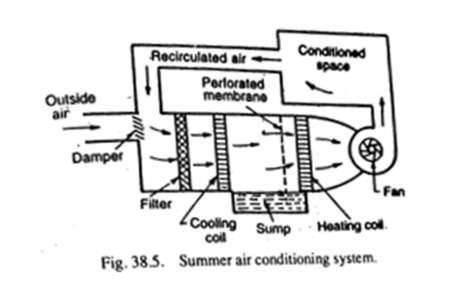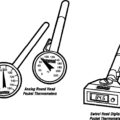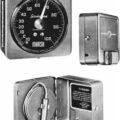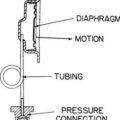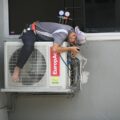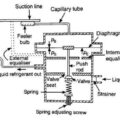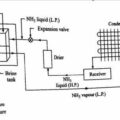Comfort chart
The Comfort Chart is a tool that helps operators determines how well air-handling equipment is providing thermal comfort for the building occupants or for a process within the facility. In designing winter or summer air conditioning system, the designer should be well conversant with a number of factors which physiologically affect human comfort.
The important factors are as follows: 1. Effective temperature, 2. Heat production and regulation in human body, 3. Heat and moisture losses from the human body, 4. Moisture content of air, 5. Quality and quantity of air. 6. Air motion, 7. Hot and cold surfaces
Effective Temperature : The degree of warmth or cold felt by a human body depends mainly on the following three factors:
- Dry bulb temperature, Relative humidity and 3. Air velocity.
- Too low humidity causes dryness of skin
- Too high humidity causes deposition of moisture in clothing
- High air velocity can cause un-comfort
In order to evaluate the combined effect of these factors, the effective temperature is employed. It is defined as that index which collates the combined effects of air temperature, relative humidity and air velocity on the human body. The numerical value of effective temperate is made equal to the temperature of stills (i.e 5 to 8 m/min air velocity) saturated air, which produces the same sensation of warmth as produced under the given conditions. The practical application of the concept of effective temperature is presented by the comfort chart. This chart is the result of research made on different kinds of people subjected to wide range of environmental temperature, relative humidity and air movement by the American Society of Heating, Refrigeration and Air Conditioning Engineers (ASHRAE).
In the comfort chart, the dry bulb temperature is taken as abscissa and the wet bulb temperature of ordinates.
- The effective temperature for summer air conditioning is 21°C
- The effective temperature for winter air conditioning is 7°C
- In slightly cool condition comfort of human beings is not influenced by moisture from RH =30% to 90%
- With increase in temperature the comfort is influenced by moisture
- At tdb=25.3°C, 70% feel comfortable from RH =25% to 70%.
- It has been found that for comfort, women require 5ºC higher effective temperature than men.
- All men and women above 40 years of age prefer 5ºC higher effective temperature than the persons below 40 years of age.
Factors Affecting Optimum Effective Temperature
- Climatic and seasonal differences: It is a known fact that the people living in colder climates feel comfortable at a lower effective temperature than those living in warmer In winter the optimum effective temperature is 19ºC whereas in summer this temperature is 22ºC.
- Clothing: Light clothing need less optimum temperature than a person with heavy
- Age: The children need higher effective temperature than Thus, the maternity halls are always kept at an effective temperature of 2 to 3ºC higher than the effective temperature used for adults.
- Duration of stay It has been established that if the stay in a room is shorter, then higher effective temperature is required than that needed for long
- Kind of activity: When the activity of the person is heavy such as people working in a factory, dancing hall, then low effective temperature is needed than for the people sitting in cinema hall or
Heat Production and Regulation in Human Body: The human body produces heat from the combustion of food. The rate of heat production depends upon the individual’s health, his physical activity and his environment. Since the body has a thermal efficiency of 20 per cent, therefore the remaining 80 per cent of the heat must be rejected to the surrounding environment, otherwise accumulation of heat results which causes discomfort.
Moisture Content of Air: In general, for winter conditions in the average residence, relative humidity above 35 to 40 per cent is not practical. In summer comfort cooling, the air of the occupied space should not have a relative humidity above 60 per cent.
Quality and Quantity of Air: purity of air should be maintained as people do not feel comfortable while breathing contaminated air. So proper filtration, cleaning and purification of air is necessary. For general application, a minimum of 0.3 m 3 /min of outside air per person, mixed with 0.6m 3 /min of recirculated air is good.
Air Motion: The air motion which includes the distribution of air is very important to maintain uniform temperature in the conditioned space. No air conditioning system is satisfactory unless the air handled is properly circulated and distributed. Ordinarily, the air velocity in the occupied zone should not exceed 8 to 12 m/min. The air velocities in the space above the occupied zone should be very high in order to produce good distribution of air in the occupied zone.
Equipment used in air conditioning:

- Circulation fan: it moves air to and from the room
- Air conditioning unit: it is a unit which consists of cooling and dehumidification in summer and heating and humidification in winter
- Supply duct: it directs conditioned air from circulating fan to room
- Supply outlet: it distribute conditioned air in the room evenly
- Return outlet: it allows room air to return duct
- Filters: it removes dust, dirt, bacteria from the air.
Classification of Air conditioning
- According to purpose
- Comfort air conditioning
- Industrial air conditioning
- According to season
- Winter air conditioning
- Summer air conditioning
- Year round air conditioning
- According to arrangement of equipment
- Unitary air conditioning
- Central air conditioning
Winter Air conditioning system
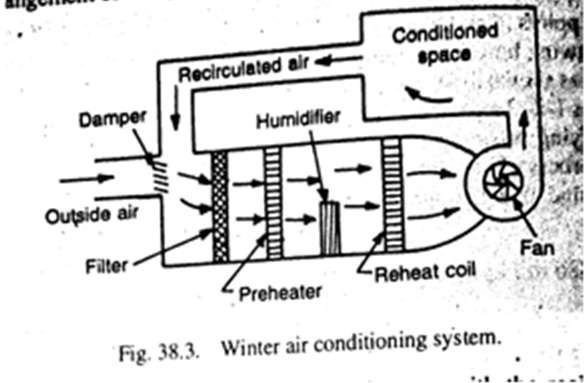
In winter AC System, the inlet air is heated by the heater, and in winter season due to less present of moisture in the air, we also need to add the moisture particle to the air, generally, a humidification system is added to maintain the moisture quantity. The outside air flows through a damper and mixes up with the recirculated air which is obtained from the conditioned space.
The mixture here passes through a filter to remove dirt, dust, and other impurities. The air now passes through a preheat coil to prevent the possible freezing of water and to control the evaporation of water in the humidifier. After that, the air is made to pass through a reheat coil to bring the air to the designed dry bulb temperature.
Now, the conditioned air is supplied to the conditioned space by a fan. From the conditioned space, a part of the air is exhausted to the atmosphere by the exhaust fans. The remaining part of the used air is again conditioned and this will repeat again and again.
Summer Air conditioning system
In this system, the air is cooled and generally dehumidified. The outside air flows through the damper and mixed with recirculated air (which is collected from the conditioned space). The mixed air passes through a filter to remove the dirt, dust and impurities.
The air is now passes through a cooling coil. The coil has a temperature much below the required dry bulb temperature of the air in the conditioned space. The cooled air passes through a perforated membrane and loses its moisture in the condensed which is collected in the sump. After that, the air is made to pass through a heating coil which heats the air slowly.
This is done to bring the air to the designed dry bulb temperature and relative humidity. Now the conditioned air is supplied to the conditioned space by a fan. From conditioned space, a part of the used air is rejected to the atmosphere by the exhaust fan. The remaining air is again conditioned and this repeated for again and again.
The outside air is sucked and made to mix with recirculated air to make for the loss of conditioned air through exhaust fan from the conditioned space.
